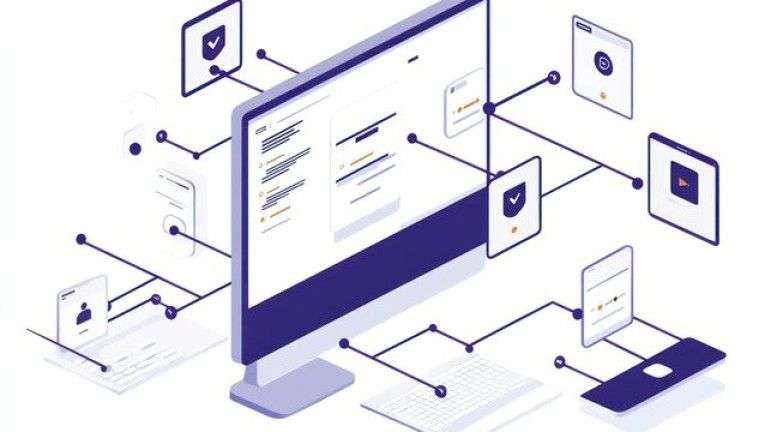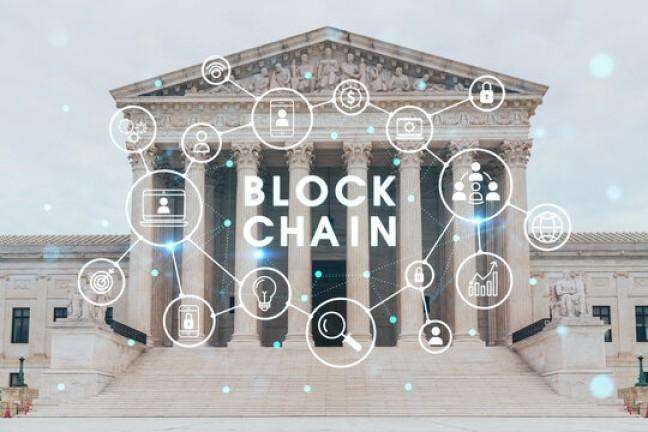When I first heard about e-certificate blockchain verification, I was intrigued by the promise of enhanced security and authenticity in digital credentials. Blockchain technology has already revolutionized various industries, and its application in verifying e-certificates is both timely and necessary. In this article, I’ll explore what e-certificate blockchain verification is, how it works, and its potential benefits and challenges.
Table of Contents
Understanding E-Certificate Blockchain Verification
What is an E-Certificate?
An e-certificate is a digital version of a traditional paper certificate, used to verify achievements, qualifications, or identities. These can include academic diplomas, professional certifications, and even personal identifications. The shift from physical to digital certificates has brought convenience but also new challenges, particularly regarding verification and authenticity.
What is Blockchain?
Blockchain is a decentralized digital ledger that records transactions across multiple computers in a way that ensures data integrity and security. Each transaction, or block, is linked to the previous one, creating a chain. This technology is known for its transparency, immutability, and security features, making it an ideal solution for verifying digital certificates.
How Does Blockchain Verification Work?
Blockchain verification involves recording the issuance of a certificate on a blockchain network. Once a certificate is issued, a unique cryptographic hash of the certificate is created and stored on the blockchain. This hash acts as a digital fingerprint, which can be used to verify the authenticity of the certificate at any time. Anyone with access to the blockchain can verify the certificate’s validity by comparing the stored hash with the hash of the presented certificate.
Benefits of E-Certificate Blockchain Verification
Enhanced Security
One of the primary advantages of using blockchain for certificate verification is enhanced security. Traditional digital certificates can be easily duplicated or forged, but blockchain technology makes this nearly impossible. Each certificate is uniquely hashed and stored on the blockchain, ensuring its authenticity.
Transparency and Trust
Blockchain’s transparency is another significant benefit. Since the blockchain ledger is publicly accessible, anyone can verify the authenticity of a certificate without relying on intermediaries. This fosters trust between certificate issuers, holders, and verifiers.
Cost Efficiency
E-certificate blockchain verification can also reduce costs. Traditional verification processes often involve multiple intermediaries and manual checks, which can be time-consuming and expensive. Blockchain technology automates and streamlines this process, reducing the need for intermediaries and lowering costs.
Immutability
Once a certificate is recorded on the blockchain, it cannot be altered or deleted. This immutability ensures that the certificate remains valid and unchanged over time, providing a reliable record of achievements or qualifications.
Easy Accessibility
Blockchain technology makes it easy to access and verify certificates from anywhere in the world. This is particularly beneficial for individuals and organizations that need to verify credentials across different countries and institutions.
Applications of E-Certificate Blockchain Verification
Academic Credentials
One of the most common applications of e-certificate blockchain verification is in academia. Universities and educational institutions can issue digital diplomas and transcripts on the blockchain, allowing employers and other institutions to verify the authenticity of these credentials quickly and securely.
Professional Certifications
Professional certifications, such as those for IT professionals, engineers, and healthcare workers, can also benefit from blockchain verification. Certifying bodies can issue digital certifications on the blockchain, ensuring that these credentials are authentic and have not been tampered with.
Identity Verification
E-certificate blockchain verification can be used for identity verification purposes as well. Digital IDs and personal records can be stored on the blockchain, providing a secure and tamper-proof way to verify an individual’s identity.
Licensing and Regulatory Compliance
Industries that require licensing and regulatory compliance, such as finance and healthcare, can use blockchain verification to ensure that professionals hold valid and up-to-date licenses. This can streamline compliance processes and reduce the risk of fraud.
Challenges and Considerations
Technical Complexity
Implementing e-certificate blockchain verification requires a deep understanding of both blockchain technology and the specific requirements of the certificate-issuing bodies. This technical complexity can be a barrier for some organizations.
Regulatory and Legal Issues
The regulatory landscape for blockchain technology is still evolving. Organizations need to stay informed about legal developments and ensure that their use of blockchain for certificate verification complies with relevant regulations. This can be challenging, given the global nature of blockchain and the varying regulatory requirements across different jurisdictions.
Adoption and Integration
Adopting blockchain technology for certificate verification requires buy-in from multiple stakeholders, including certificate issuers, holders, and verifiers. Integrating blockchain with existing systems and processes can also be a challenge. Organizations need to invest in the necessary infrastructure and training to ensure a smooth transition.
Scalability
Scalability remains a challenge for many blockchain networks. Handling large volumes of certificates and verification requests can be slow and costly. Solutions like layer 2 scaling and off-chain processing are being developed to address these issues, but achieving scalability while maintaining security and decentralization is an ongoing challenge.
The Future of E-Certificate Blockchain Verification
Continued Innovation
As blockchain technology continues to evolve, we can expect further innovation in e-certificate verification. New protocols and features will enhance the security, transparency, and efficiency of the verification process. Staying ahead of these developments will be crucial for organizations looking to leverage the full potential of blockchain technology.
Increased Adoption
As more institutions and industries recognize the benefits of e-certificate blockchain verification, adoption will increase. This will drive further improvements in the technology, making it more accessible and practical for a wide range of applications.
Integration with Emerging Technologies
Blockchain technology is well-positioned to integrate with other emerging technologies, such as artificial intelligence and the Internet of Things (IoT). This synergy can lead to more sophisticated and effective solutions for certificate verification, further expanding the possibilities of blockchain technology.
Standardization and Interoperability
To achieve widespread adoption, standardization and interoperability between different blockchain networks and certificate-issuing bodies will be crucial. Efforts are already underway to develop common standards and protocols for blockchain-based certificate verification, which will help streamline the process and enhance its effectiveness.
Conclusion
E-certificate blockchain verification offers a secure, transparent, and efficient solution for verifying digital credentials. By leveraging the unique features of blockchain technology, organizations can enhance the authenticity and trustworthiness of their certificates, reduce costs, and streamline verification processes.
In my exploration of e-certificate blockchain verification, I’ve come to appreciate its potential to revolutionize the way we verify and manage digital credentials. While there are challenges to overcome, the benefits and possibilities are immense.
As we continue to explore and adopt e-certificate blockchain verification, we’ll unlock new opportunities and redefine the future of digital credentialing. The key is to stay informed, embrace innovation, and leverage the technology to its fullest potential.
Whether you’re an educational institution, a professional certifying body, or an individual looking to secure your digital credentials, e-certificate blockchain verification offers a promising path forward. By understanding its potential and addressing the challenges, we can create a more secure and trustworthy digital world.





